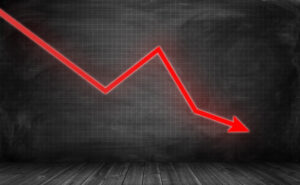How Far Could Stocks Fall?
The comments below are an edited and abridged synopsis of an article by Jim Rickards
The stock market has been ugly lately, but it’s the larger trend that’s really disconcerting.

Investors know all about the stock market collapse in recent months. The DJIA is down over 20% since January. The S&P 500 is down 23% since January. And the Nasdaq Composite is down 32% since its all-time high last November.
Those drops are not as bad as the crashes in March 2020 during the pandemic or late 2008 during the global financial crisis, but those comparisons offer little comfort since they were among the worst in history.
The real problem for stock investors today is not that the crash is bad so far, but that it might just be getting started.
We may be looking at losses that more closely resemble the over-80% collapse of the Dow from 1929–1932 or the 80% collapse of the Nasdaq in 2000–2001 in the wake of the dot-com bubble.
The Fed has misdiagnosed the nature of today’s inflation. It is trying to crush inflation by reducing demand in the economy. It is focused on demand pull inflation where consumers buy in anticipation of even higher inflation to come.
But the inflation we have is called cost push inflation; it comes from the supply side, from global supply chain disruptions and the war in Ukraine.
The Fed has misdiagnosed the disease and is applying the wrong medicine. Tight money won’t solve a supply shock. Higher prices will continue. But tight money will hurt consumers, increase savings and raise mortgage interest rates, which hurts housing among other things.
How much damage will Powell do to the economy and markets? That’s the biggest issue for investors. And the answer is that Powell will do far more damage than he expects. Market investors are not ready for this, but you should be.
Up for discussion: Different causes, same outcome; job one; the endgame; will Powell back down; all pain, no gain.
